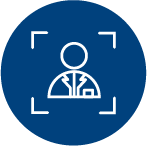Healthier CHEO Kids is a programme of applied clinical research and patient/clinician education designed to increase the physical activity and quality of life of CHEO patients and their families. Physical activity has immediate physical and mental health benefits for all children and youth. These benefits include socialization with friends, skill development, increased strength and bone density, enhanced daily activity and improved mental health and readiness for academic learning. Physical activity during childhood and adolescence also establishes healthy lifestyle habits that decrease the risk of disease later in life, such as heart disease, obesity, diabetes, osteoporosis and some types of cancer. Dr. Pat Longmuir leads the Healthier CHEO Kids programme, working in conjunction with many CHEO clinicians and staff. Healthier CHEO Kids has active research projects for the treatment of childhood illness and the prevention of future disease. Our research focused on treatment examines the benefits of physical activity and exercise on mental health and physical function. Our preventive research is supporting children’s physical literacy – their capacity to achieve and maintain a healthy, active lifestyle. If you have participated in a research project led by Dr. Longmuir, check out her website to see results from recent studies.
CHEO clinicians and researchers are committed to helping CHEO patients be their healthiest! We know that means much more than the medicines or treatments needed for each illness or injury. Health is about the whole person, not just the newest diagnosis. We think about physical health and mental health, and how they work together to provide each child with the highest possible quality of life.
Many scientists and clinicians at CHEO are evaluating the impact of physical activity on the health of children. Check out our Current Research page to learn more about these innovative projects.
Many children and youth who come to CHEO find it difficult to be physically active, to maintain their fitness, or to enjoy active play opportunities with their friends. CHEO patients who would like to have the support of a physical activity counsellor should ask their doctor to refer them to Healthier CHEO Kids Physical Activity Counselling services – see below.
Want to learn more about physical activity for children and youth? Check out these links!
- ParticipACTION
- CSEP Physical Activity Guidelines
- CSEP Sedentary Behaviour
- Active Living Alliance for Canadians with a Disability
Physical Activity Counselling
Physical activity counselling is provided to CHEO patients upon referral from a clinician. Dr. Pat Longmuir supervises the work of physical activity counselling interns from the Physical Activity and Intervention Counselling Master of Human Kinetics programme at the University of Ottawa, School of Human Kinetics. Individualized counselling sessions are available free of charge from April to August each year. Counselling can be provided to 20 to 30 patients each year, with counsellors assigned on a first come, first served basis.
Physical activity counselling services are offered to CHEO patients, either alone or with their family. The counselling services available, in both English and French, include:
- Increasing motivation for physical activity and active play
- Enhancing fitness or physical activity through a personal activity plan
- Building confidence and/or skill for physical activity participation
- Relaxation and stress management techniques
- Positive mental attitudes and/or living skills
- Enhanced goal setting, concentration or focus
The time and location of counselling sessions are arranged directly with each patient, and may be held at CHEO, other locations or virtually. The number of counselling sessions will be determined by the needs and interests of each patient. For some patients, 1 or 2 sessions are all that is required. More typically, sessions occur weekly for 6 to 8 weeks.
To refer a patient for Physical Activity Counselling services, create an internal referral in EPIC to physical activity counselling or contact Dr. Pat Longmuir by email [email protected].
Research Projects
-
Quick, effective screening tasks identify children with medical conditions or disabilities needing physical literacy support.
03/01/2024
-
Community Readiness Assessment of the “Take TIME for Your Child’s Health” Intervention
24/08/2023
Children are engaging in less physical activity and worse dietary habits, resulting in an increased risk of detrimental health effects such as childhood obesity, diabetes, hypertension, heart disease, and other conditions. Physical activity declines from age 3, meaning that children are subject to many more years of unhealthy lifestyle behaviors [1]. Interventions are vital to change this trajectory, but communities have different needs and respond variably to interventions. The Community Readiness Model, developed by the Tri-Ethnic Center for Prevention Research at Colorado State University, integrates a community’s culture, resources, and level of readiness to develop stage-appropriate strategies [2]. The model considers six dimensions to classify a community’s preparedness to combat an issue. Interventions matched to community readiness are vital; they are challenging enough to create change without being too ambitious [2]. Studying community readiness is important because of the implications for public health and community intervention planning. Findholt [3] reported the model was effective in gauging community readiness for addressing childhood obesity.
-
Preventing sedentary lifestyles among young children born with congenital heart defects: A feasibility study protocol of physical activity rehabilitation after surgical or catheterization intervention
18/08/2023
This feasibility study will provide essential data for a randomized controlled trial to evaluate play-based, parent-delivered interventions optimized to support age-appropriate physical activity and motor skills among young children with CHD. Preliminary intervention efficacy data will inform an evidence-based sample size calculation, optimize intervention timing, and identify hypotheses on the motor skill—physical activity connection and the impact of play-based, parent-led interventions during recovery from CHD treatment. Long-term, the goal is to optimize motor skill and active lifestyles among young children with CHD, enabling their healthy growth and development and enhancing childhood quality of life.
-
Impacting Children’s Physical and Mental Health through Kinesiology Support in Clinical Care: A Randomized Controlled Trial Protocol
18/08/2023
Our primary hypothesis is that children with medical conditions and disabilities, aged 8 to 18 years, randomized to receive 24 hours of healthy, active lifestyle support will have more confidence that they can participate in physical activity than those who do not receive support. Our secondary hypothesis is that, in comparison to the wait-list control group, those receiving kinesiology support will manifest a healthier lifestyle reflected in closer compliance to the Canadian 24-hour movement guidelines for a healthy lifestyle.
-
Impact of Physical Activity Counselling on Children with Medical Conditions and Disabilities and Their Families
27/07/2023
Physical activity positively impacts the physical, emotional, and social development of children [1]. The World Health Organization recommends that children perform 60 min of moderate-to-vigorous intensity activity and 2–3 h of light intensity activity daily, with bone and muscle strengthening activities 2–3 days per week [2]. Although physical activity is crucial for the health of children living with chronic medical conditions or disabilities, and proves beneficial to health regardless of diagnosis [3], many barriers to physical activity persist for these children. As a result, children with medical conditions or disabilities are much less likely to engage in healthy, active lifestyles [1,4,5,6]. Active lifestyles provide a variety of physical and mental health benefits, such as improved cardiovascular health, decreased anxiety and depression, and decreased obesity risk [7,8]. The more sedentary lifestyles of children with medical conditions and disabilities negatively impacts their socialization with peers, growth and development, and academic readiness [9] and increases their risk for secondary morbidities throughout life [7].
-
Criteria Used to Determine Unrestricted Return to Activity After ACL Reconstruction in Pediatric and Adolescent Patients: A Systematic Review
07/03/2023
Only 14 of the 27 reviewed studies reported using >1 criterion when determining RTA. Furthermore, few studies used patient-reported outcome measures or lower limb kinematics as RTA criteria, indicating that more research is needed to validate these metrics in the pediatric population.
-
Pedometer Efficacy for Clinical Care in Pediatric Cardiology
27/02/2023
The distribution of pedometers in a pediatric outpatient clinic was feasible, yet the data collected significantly overestimated physical activity, especially among younger children. Practitioners who want to introduce objective measurements as part of their physical activity counseling practice should use pedometers to monitor individual changes in physical activity and consider patient age before administering these devices for clinical care.
-
A randomized, cross-over trial comparing the effect of innovative robotic gait training and functional clinical therapy in children with cerebral palsy: a protocol to test feasibility
17/01/2023
Additional advantages of robotic devices include improved efficiency, with more precise repetition of exercise being possible in an allotted time and efficient patient preparation for therapy. Typically, set up with more traditional gait training approaches can be cumbersome and time-consuming [8]. Although preliminary pediatric and adult data for large tethered robotic training devices such as the Lokomat© appear promising, these devices limit functional use and exploration within a more natural environment. Mobile robotic gait trainers hold greater promise for practice within hospitals, schools and at home as they enable participation and social integration [13] while practicing high quality gait patterns.
-
Fearless in Physical Activity: The Implications of Community-Based Physical Activity Interventions on Children, Adolescents, and Adults with Congenital Heart Disease
28/12/2022
Fearless Physical Activity (Fearless) events were created to promote safe and health-appropriate community-based physical activity for individuals with CHD. Fearless events were designed to be fun and to enhance physical activity confidence—providing children, adolescents, and adults living with CHD the opportunity to do physical activity “without fear” (i.e., worrying about health-related limitations). Fearless thus provides a framework for sport and recreation leaders who wish to promote physical activity amongst individuals with CHD. This study sought to: (1) determine the perceptions of individuals with CHD towards physical activity and Fearless events, (2) evaluate the impact of Fearless on intrinsic motivation, perceived competence, and current physical activity behaviour, and (3) utilize participant perceptions and outcomes to inform best practices for community-based physical activity opportunities for those with CHD. We hypothesized that Fearless event participation would increase positive perceptions of physical activity.
-
Importance of Physical Activity and Exercise in Paediatric Fontan Patients
27/05/2022
The recognition that the physical activity and exercise capacity of paediatric Fontan patients is potentially modifiable rather than “set in stone” by their abnormal physiology has spurred interest in research examining the impact of exercise training interventions. Duppen et al.13 reviewed exercise training research among individuals with congenital heart disease. Their systematic review supported the efficacy and safety of exercise training and included 16 paediatric studies with a total of 65 Fontan patients.13 Minamisawa et al.14 also reported the benefits of home exercise programmes for paediatric Fontan patients in their small case series, results that have subsequently been confirmed through 5 larger studies (total of 120 Fontan patients) reviewed by Meyer et al.15 In the most recent systematic review, Herrmann and Selamet Tierney16 (see the article in this issue) contribute new knowledge by examining a wide variety of supervised and home exercise training programmes, including motor skill development and strength training. They have also uniquely considered studies specific to paediatric Fontan patients as distinct from adults.
-
Children with Cardiomyopathy have Active Lifestyles Despite Reporting Disease-Specific Barriers to Physical Activity: A Mixed-Methods Study
15/05/2022
Although adult physical activity studies are available [11], the physical activity behaviours of children with cardiomyopathy have not been explored. It is currently unknown whether children with cardiomyopathy have adequate exercise capacity for physical activity or experience barriers that restrict their physical activity participation. This knowledge gap may lead clinicians to be overly conservative when advising children with cardiomyopathy about exercise. Whether parents, teachers or the children themselves would limit their physical activity participation is also unknown. Identifying children at risk for inactivity and promoting healthy behaviours early in childhood may lead to positive health outcomes and could potentially halt the detrimental cycle of inactivity seen among adults with cardiomyopathy.
-
The Impact of Physical Activity Restrictions on Health-Related Fitness in Children with Congenital Heart Disease
07/04/2022
Obesity is associated with health risk factors such as high blood pressure, hypercholesterolemia and insulin resistance in children [1]. Health-related behaviors, such as daily physical activity (PA), combine with broader social, environmental, and biological “environments” to influence childhood obesity [2]. Children with obesity have decreased physical competence, as assessed by motor competence [3] and musculoskeletal fitness [4,5]. Obesity is equally common (25%) among children with congenital [6] and acquired heart disease, arrhythmia, and heart transplantation [7]. One research study suggested that children with CHD who are restricted from competitive sport are more likely to be overweight or obese [8], while another found no such relationship [9]. The prevention and treatment of obesity through PA and fitness are priorities for children with CHD in order to minimize their risk of cardiovascular and chronic disease [1] and motor impairment [10,11], as well as to maintain their overall health and fitness [5].
-
“Like Any Other Camp”: Experiences and lessons learned from an integrated day camp for children with heart disease
20/03/2022
Many parents chose the integrated camp as their child's first summer camp experience, citing trust in the local division of Cardiology's approval of the camp activities as an important reason for enrolling. All participants agreed the integrated camp was a valued opportunity which should continue, although not all described positive camp experiences. Participants' descriptions of the integrated camp were organized into two main themes: 1) overall expectations of the camp and 2) important opportunities afforded by the camp experience. Partaking in a typical camp experience, connecting to local children with heart disease, adequate safety precautions and activity adaptations were specific expectations held by participants. Important opportunities included greater independence and confidence, navigating disclosure of their diagnosis to peers on their own terms, and more diverse social connections. Improving communication with parents to ensure expectations match camp objectives would have enhanced the experience.
-
Inactive Lifestyles Among Young Children With Innocent Murmurs or Congenital Heart Disease, Regardless of Disease Severity or Treatment
01/01/2022
These results emphasize the need for interventions targeting the youngest children seen in cardiac clinics, regardless of diagnoses of CHD or innocent murmur.
-
Predilection for physical activity and body mass index z-score can quickly identify children needing support for a physically active lifestyle
01/10/2021
Predilection for physical activity and body mass index z-score quickly identify children needing physical literacy support.
-
Associations between physical activity, sedentary time and social-emotional functioning in young children
01/09/2021
The majority of the literature on PA and mental health in children has focused on psychopathological behaviours such as conduct problems, hyperactivity, inattention, as well as internalizing conditions such as anxiety and depressive symptoms (Carson et al., 2016; Poitras et al., 2016). Less is known about positive SEF indicators, which represent important health components as indicated by the WHO (World Health Organization, 2019). Moreover, Young and colleagues showed that girls aged 4–12 years with increased levels of PA with fathers was associated with greater improvement of daughters’ SEF, such as improved personal responsibilities, optimistic thinking, goal-directed behaviour, decision making, relationship skills, self-awareness, self-management, and prosocial behaviour, as measured by the Devereux Student Strengths Assessment scale Young et al. (2019). However, this study failed to disentangle whether the improvement in SEF was due to the increased PA itself or because of the PA done with fathers, thus the independent associations between PA and SEF could not be determined.
-
Interactions with Home and Health Environments Discourage Physical Activity: Reports from Children with Complex Congenital Heart Disease and Their Parents
04/05/2021
Social and physical environments combine with individual characteristics and behaviours as important determinants of health [17]. Previous investigations among children with CCHD have focused on correlates between physical activity and individual characteristics, primarily those related to the diagnosis [18,19,20], with little attention having been paid to environmental influences. Abnormal CCHD physiology limits exercise capacity but the degree of limitation is not associated with activity participation [18]. Although exercise is safe for most children with CCHD, 20% report physician-imposed activity restrictions [18]. Teens with CCHD recognized the importance of physical activity for health, but interpreted feelings of fatigue and limited activity self-efficacy as negatively impacting on their participation [19]. Interactions with a supportive social environment and mastery experiences were perceived as facilitating physical activity [19]. These findings align with theories that describe how behaviour is influenced by social interactions and interpersonal environments [21]. Interactions that support the individual’s autonomy (e.g., mastery experiences) will increase the desired behaviour while those that are controlling (e.g., authoritarian style) will decrease motivation and enjoyment. These theories would posit that the importance of personal attitudes and beliefs toward the behaviour (e.g., physical activity is important for health), the interpretation of social norms about the behaviour (e.g., supportive social environment), and the perception of self-control over decision-making and action (e.g., activity self-efficacy) would impact engagement in physical activity behaviours.
-
Characterization of physical literacy in children with chronic medical conditions compared to healthy controls: a cross-sectional study.
09/03/2021
-
Perceptions of healthy lifestyles among children with complex heart disease and their caregivers
01/02/2021
Children born with complex heart problems (CHPs) are those diagnosed with serious hemodynamic disturbances, arrhythmias, or cardiomyopathies, which are often associated with hypoxia, congestive heart failure, and metabolic acidosis prior to treatment.1,2 Research indicates that these children have an increased risk for secondary morbidities affecting their physical and mental health.3,4 For all children, including those with cardiac diagnoses, their physical and mental health and quality of life are intimately connected to physical activity, healthy eating, and mental well-being, known collectively as healthy active living.5,6
-
Higher Child-Reported Internalizing and Parent-Reported Externalizing Behaviors were Associated with Decreased Quality of Life among Pediatric Cardiac Patients Independent of Diagnosis: A Mixed-Methods Assessment
20/01/2021
Children living with cardiac diagnoses can experience functional impairments, parental restrictions of activity, extensive medical treatment, and social stress, all of which can have a significant, negative impact on their quality of life (QoL) [1]. As more children are surviving through adulthood with pediatric cardiac diagnoses [2], there is an increasing need to understand and address their psychosocial health. Research indicates children have a greater risk of emotional distress and/or reduced QoL if they live with congenital heart disease [1,3] (i.e., changes to the heart’s structure) or inherited arrhythmia syndromes or cardiomyopathies [4]. However, previous research examined emotional distress and QoL independently, leaving the relationship between them largely anecdotal. One study among adolescents and young adults (12 to 20 years) with cardiac disease (106 moderate to severe congenital heart diagnoses, 8 Kawasaki disease, cardiomyopathy or arrhythmia) did report that lower disease-specific QoL, limited understanding of the cardiac diagnosis and a lack of social support were associated with higher levels of anxiety and depression [5]. However, such measures of health-related QoL are more often reflective of perceived health status (i.e., presence of disease) and may not capture salient changes in overall well-being [6]. Thus, the relationship between overall QoL and emotional distress remains unclear, particularly among younger children, those with non-congenital diagnoses and with simple as well as more complex conditions.
-
Developing patient resources to enable the exchange of healthy lifestyle information between clinicians and families of children with complex heart problems
11/01/2021
After development of the knowledge-to-action tools had been completed,one cardiologist and one research assistant implemented one or more of these newresources during each clinic visit as appropriate for each patient. Thirty-nine parentsand eight children completed post-clinic interviews to explore their perceptions ofthe new resources. The nine resources developed included brochures and websitesaddressing physical activity with a heart condition, body contact restrictions, exercisetest results, emotional health, finding community resources, encouragement for ask-ing healthy lifestyle questions and a brief, in-clinic healthy lifestyle assessment.
-
Participation in a Community-Based Sport Program is Feasible for Children with Congenital Heart Disease and May Benefit Physical Literacy Development: A Pilot Study
29/11/2020
Future trials evaluating Sportball©’s impact with larger samples and multiple 10-week sessions are recommended.
-
Attitudes toward physical activity as a treatment component for adolescents with anorexia nervosa: An exploratory qualitative study of patient perceptions
13/11/2020
Participants recognized both benefits (psychological, sociological, and physiological) and risks (trigger negative thoughts, increase competitive behavior) of implementing physical activity into acute AN treatment. Patient characteristics, such as stage of treatment and exercise history, had an impact on participants' perceptions toward physical activity in AN. Participants suggested that the ideal physical activity program would be focused on fun, individualized and progressively integrated, group-based, and directly supported by staff. Although the majority of participants stated that they would wear an activity monitor for research purposes, concerns were voiced regarding compliance and the potential impact on eating disorder symptomatology.
-
Promoting physical activity in children with impairments
04/09/2020
Quality physical activity opportunities provide each child with desired activities in the settings of interest.
-
Identifying Criteria for a Physical Literacy Screening Task: An Expert Delphi Process
03/06/2020
Research is required to identify potential tasks that meet these criteria and are suitable for each REACH sector.
-
Impacting child health outcomes in congenital heart disease: Cluster randomized controlled trial protocol of in-clinic physical activity counselling
01/04/2020
The impact on physical activity motivation and participation will evaluate the effectiveness of this standardized approach for increasing physical activity in children with congenital heart defects.
-
“I really like playing games together”: Understanding what influences children with congenital heart disease to participate in physical activity
03/02/2020
Four main themes surrounding physical activity were identified:(a) motivation, (b) self-efficacy, (c) peer influences, and (d) family influences. Although feelings of excitement and enjoyment towards physical activity were prevalentthroughout the data (“I'm really excited...because I really like those sports”), participants also often felt frustrated, nervous, and fatigued (“I'm not very good at theskills”). Social inclusion with peers and family influences were meaningful reasons toengage in physical activity (“I really like playing games together”). Following the completion of the programme, participants emphasized their enjoyment of physical activity as a primary source of motivation, demonstrating an important shift from recognizing positive health outcomes (“...it's good for you”) towards more intrinsic sources of motivation (“...because it's fun”).
-
Physically active children with epilepsy have good objective sleep quality despite subjective reports of fatigue and sleep problems.
17/01/2020
Poor sleep quality is associated with adverse health outcomes and lower health-related quality of life in children [1,2]. Impaired sleep and poor sleep habits have been reported in children with epilepsy (CWE) using subjective questionnaires [3,4] and are associated with lower quality of life [5]. The relationship between epilepsy and sleep is bidirectional, whereby sleep deprivation can trigger epileptic events and seizures can disrupt sleep architecture [6,7]. Given the associations between sleep and health in CWE, it is important for clinicians to understand and address sleep in the overall management of these patients. A potential method for improving sleep in CWE is to increase their physical activity. In CWE, physical activity has been shown to improve quality of life and mental health outcomes, increase self-esteem, and benefit long-term general health [8,9]. Expert consensus also favors active participation in exercise and sports [9]. There is modest epidemiological and experimental evidence supporting an association between improved sleep quality and increased physical activity in healthy adults and children [10,11]; however, the nature of this relationship has not yet been characterized in CWE.
-
Canadian Assessment of Physical Literacy in Grades 7-9 (12-16 years): Preliminary validity and descriptive results
08/11/2019
-
Parents of Very Young Children with Congenital Heart Defects Report Good Quality of Life for Their Children and Families Regardless of Defect Severity
07/11/2019
Parents report a lower quality of life among girls, and lower family quality of life is associated with lower family income.
-
The effect of high-intensity interval training on inhibitory control in adolescents hospitalized for a mental illness.
01/10/2019
The impact of pre-therapy HIIT to enhance focus and reduce impulsive thoughts and behaviours may improve adolescent patients’ response to mental health treatment.
-
Sensitivity, specificity, and reliability of the Get Active Questionnaire for identifying children with medically necessary special considerations for physical activity
30/11/2018
-
Relationship Between Physical Activity, Tic Severity and Quality of Life in Children with Tourette Syndrome
01/11/2018
Further research is needed to determine the utility of physical activity as therapy for tics.
-
Higher screen time, lower muscular endurance and decreased agility limit the physical literacy of children with epilepsy. Epilepsy & Behavior.
19/10/2018
Programs promoting physical literacy in children with epilepsy should be encouraged, specifically interventions decreasing screen time and enhancing muscular endurance and motor skills, thereby facilitating healthier lifestyles.
-
Understanding parent perceptions of healthy physical activity for their child with a chronic medical condition
04/10/2018
-
A cross-sectional study exploring the relationship between age, gender, and physical measures with adequacy in and predilection for physical activity
02/10/2018
These findings suggest that practitioners should consider the physiological and psychological makeup of the child, and ways to enhance adequacy and predilection among children with limited cardiorespiratory fitness, in order to create the best possible environment for all children to participate in physical activity.
-
Canadian Assessment of Physical Literacy Second Edition: a streamlined assessment of the capacity for physical activity among children 8 to 12 years of age
02/10/2018
Regardless of the assessment selected, scores are available to interpret the performance of each child relative to Canadian children of the same age and sex.
-
Associations between teacher training and measures of physical literacy among Canadian 8- to 12-year-old students
02/10/2018
Children taught by PE specialists were more likely than those taught by generalists to demonstrate recommended levels of motivation and confidence, and to have better movement skills, which are hypothesized to be critical prerequisites for the development of a healthy lifestyle.
-
The relationship between sedentary behaviour and physical literacy in Canadian children: a cross-sectional analysis from the RBC-CAPL Learn to Play study
02/10/2018
These results highlight differences in the ways that screen and non-screen sedentary behaviours relate to physical literacy.
-
Physical literacy levels of Canadian children aged 8-12 years: descriptive and normative results from the RBC Learn to Play-CAPL project
02/10/2018
These results provide the largest and most comprehensive assessment of physical literacy of Canadian children to date, providing a “state of the nation” baseline, and can be used to monitor changes and inform intervention strategies going forward.
-
Revising the motivation and confidence domain of the Canadian assessment of physical literacy
02/10/2018
The revised and much shorter questionnaire of 12 items that aggregate to four subscales within the domain of Motivation and Confidence is recommended for use in the CAPL-2.
-
Refining the Canadian Assessment of Physical Literacy based on theory and factor analyses
02/10/2018
The scores from the revised and much shorter 14-indicator model of CAPL can be used to assess the four correlated domains of physical literacy and/or a higher-order aggregate physical literacy factor.
-
Associations between domains of physical literacy by weight status in 8- to 12-year-old Canadian children
02/10/2018
All of the domains of the CAPL correlate positively with each other regardless of weight status, with a trend for these correlation coefficients to be slightly stronger in the healthy-weight children.
-
The relationship between physical literacy scores and adherence to Canadian physical activity and sedentary behaviour guidelines
02/10/2018
These cross-sectional findings demonstrate important associations between physical literacy and guideline adherence for physical activity and sedentary behaviour.
-
Cardiorespiratory fitness is associated with physical literacy in a large sample of Canadian children aged 8 to 12 years
02/10/2018
This study identified strong favourable associations between CRF and physical literacy and its constituent components in children aged 8–12 years.
-
Influence of the relative age effect on children’s scores obtained from the Canadian assessment of physical literacy
02/10/2018
Collectively, our results suggest that the RAE bias is mainly negligible with regard to the domain scores and overall CAPL scores in this large sample of children.
-
Physical Literacy Knowledge Questionnaire: feasibility, validity, and reliability for Canadian children aged 8 to 12 years
02/10/2018
Future studies of alternative item wording and responses are recommended to enhance test-retest reliability.
-
Canada’s Physical Literacy Consensus Statement: process and outcome
02/10/2018
Going forward, the impact of this initiative on the sector, and the more distal goal of increasing habitual physical activity levels, should be assessed.
-
Video Evaluation of Self-Regulation Skills in Preschool Aged Children with Developmental Delays: Can the impact of Tumbling Together be Measured?
27/08/2018
Research comparing Tumbling participants to children not offered the program, and examining whether the self-regulation skills improved during Tumbling participation would generalize to other settings is required.
-
Y Kids Academy Program Increases Knowledge of Healthy Living in Young Adolescents
27/06/2018
These findings support the suitability of the Y Kids Academy for improving and evaluating knowledge of healthy living in young adolescents.
-
The mental health of adolescents and pre-adolescents living with inherited arrhythmia syndromes: A systematic review of the literature
01/05/2018
-
Exercise Capacity and Self-Efficacy are Associated with Moderate-to-Vigorous Intensity Physical Activity in Children with Congenital Heart Disease
12/06/2017
Of 172 patients who were recruited, 137 (80%) had complete MVPA data and were included in the analysis.
-
Conceptual Critique of Canada’s Physical Literacy Assessment Instruments Also Misses the Mark
09/06/2017
-
Canadian Agility and Movement Skill Assessment (CAMSA): Validity, objectivity, and reliability evidence for children 8-12 years of age
01/06/2017
The Canadian Agility and Movement Skill Assessment is a feasible measure of selected fundamental, complex and combined movement skills, which are an important building block for childhood physical literacy.
-
New concepts in the assessment of exercise capacity among children with congenital heart disease: Looking beyond heart function and mortality
10/02/2015
Physically active lifestyles are important for the physical and mental health of children with congenital heart defects.
Researchers
-
Hana Alazem
Investigator, CHEO Research Institute
-
Lisa Aquilino
Investigator, CHEO Research Institute
-
Nick Barrowman
Associate Scientist, CHEO Research Institute
-
Addo Boafo
Investigator, CHEO Research Institute
-
Sasha Carsen
Scientist, CHEO Research Institute
-
Jean-Philippe Chaput
Senior Scientist, CHEO Research Institute
-
Poppy DesClouds
Investigator, CHEO Research Institute
-
Asif Doja
Investigator, CHEO Research Institute
-
Ciarán Duffy
Emeritus Scientist, CHEO Research Institute
-
Gary Goldfield
Senior Scientist, CHEO Research Institute
-
Sherri Katz
Senior Scientist, CHEO Research Institute
-
Robert Klaassen
Scientist, CHEO Research Institute
-
Patricia Longmuir
Senior Scientist, CHEO Research Institute
-
Hugh McMillan
Investigator, CHEO Research Institute
-
Wendy Spettigue
Investigator, CHEO Research Institute
-
Mark S. Tremblay
Senior Scientist, CHEO Research Institute
-
Richard Webster
Investigator, CHEO Research Institute

















